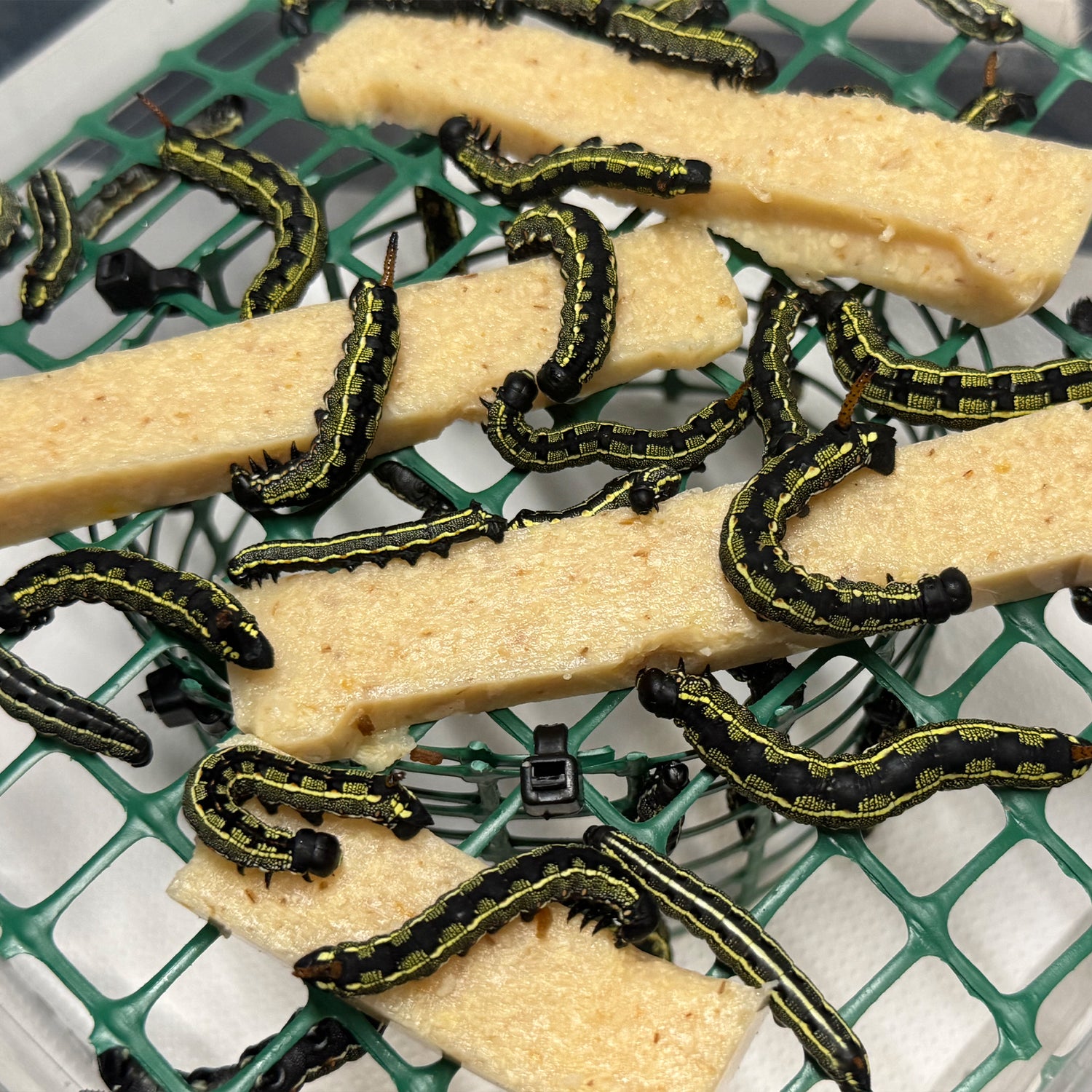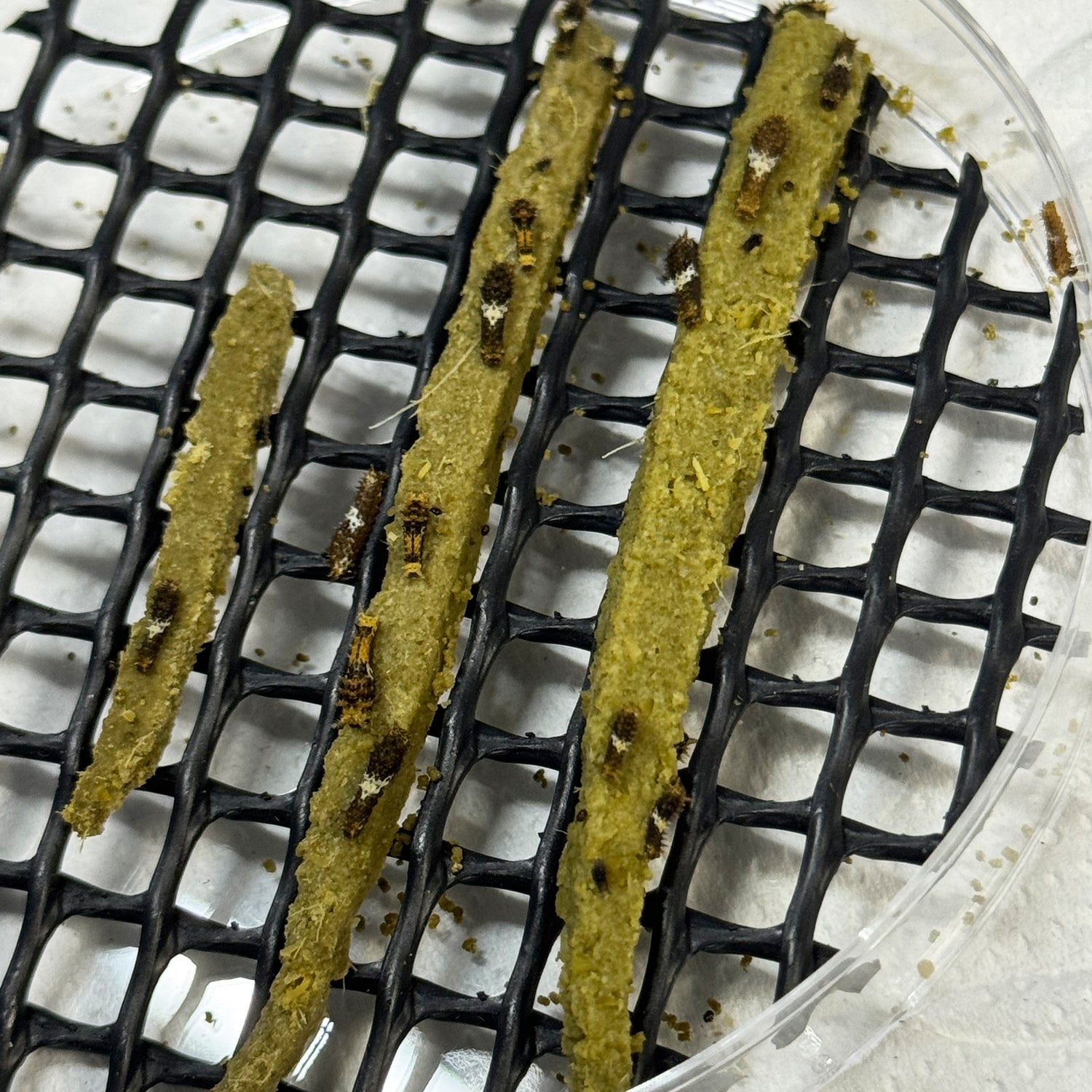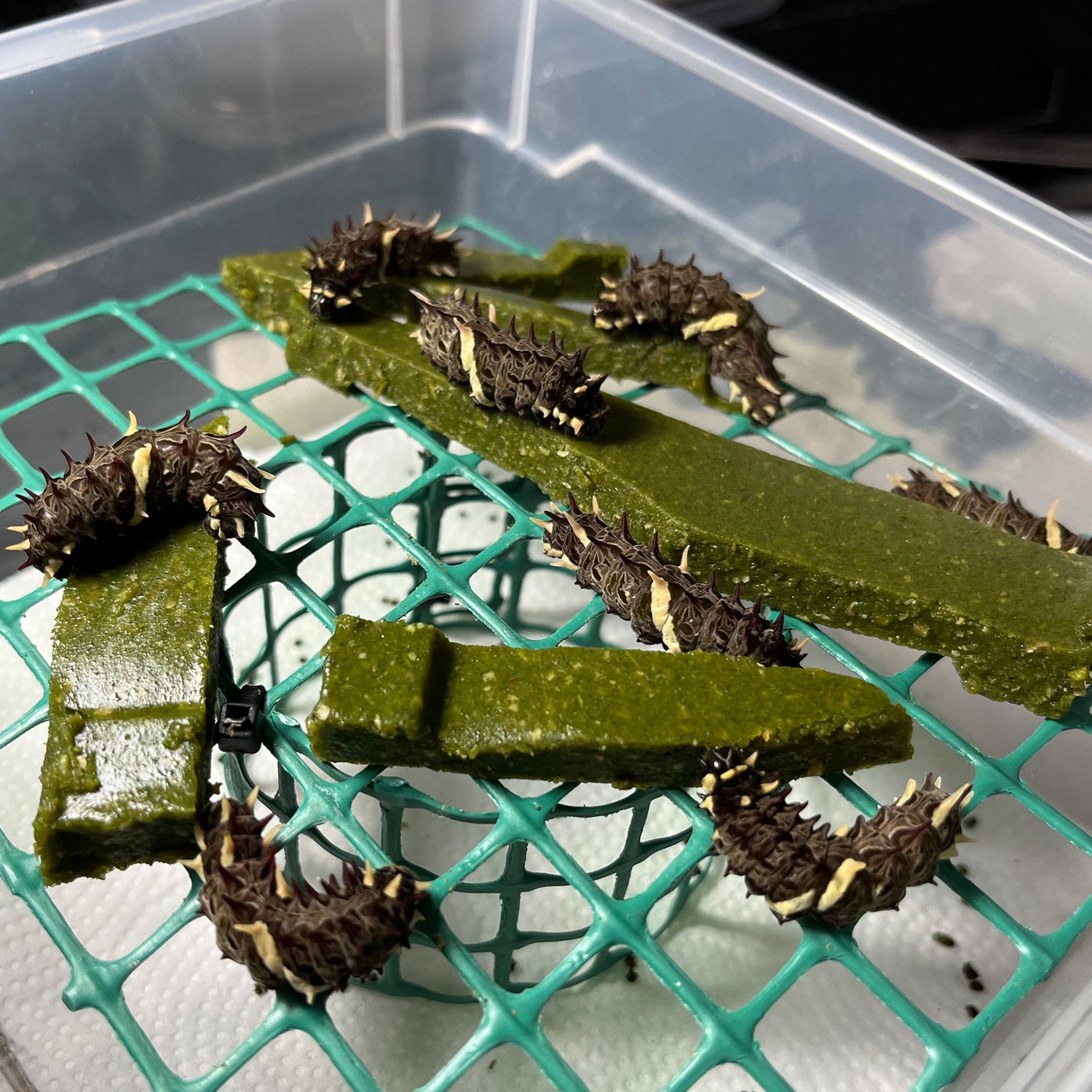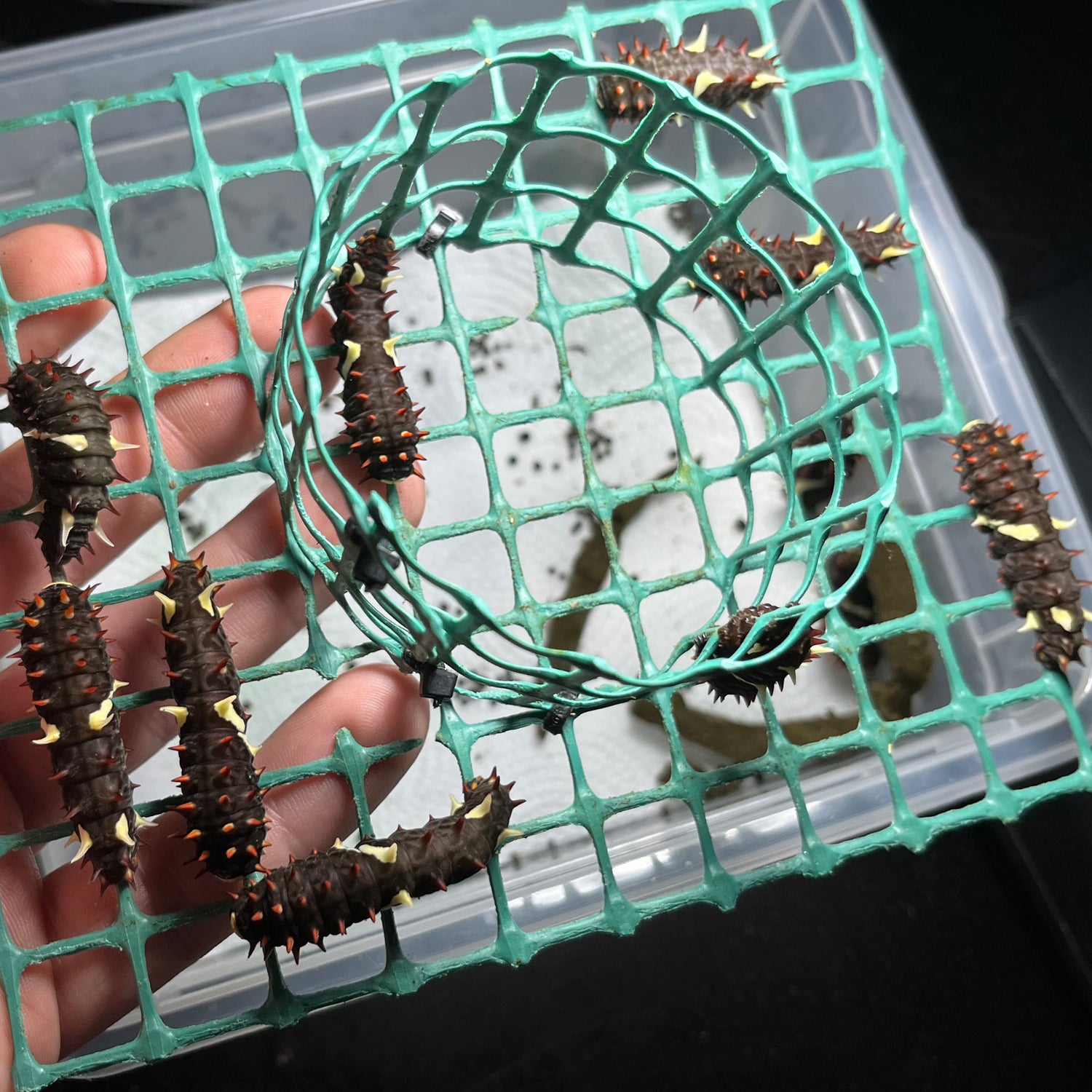
How to breed on artificial diet
When breeding on artificial diet biggest obsticale is infection so our main focus is to prevent it.
Starting Larvae
Freshly hatched larvae should be divided into groups and placed into petri dishes with nets according to the following recomendation:
- Big species: 8-10 pcs (Attacus, Acherontia, Ornitoptera)
- Average species: 10-12 pcs (Papilio nireus, Rotschildia, Manduca)
- Small species: 12-20 pcs (Hypolimnas bolina, Dryas julia, Parides)

Taking care of young larvae
When it comes to taking care of larvae in Petri dishes, you should be very strict with hygiene our advice on this topic is:
- serving thin slices of diet as on photo (VERY IMPORTANT WITH URTICA DIET),
- changing diet every 2 days to keep it fresh
- clean frass everyday.
One of the most imporant steps is selection of larvae. You should kill any larvae that have not started feeding within 2 days as they become weak and and less resistant to to infection.

Moving larvae into containers
As larvae reach L3 or L4 (L4 for small species) they should be moved into container with proper ventilation and larger nets.
Regarding taking care of larvae in boxes, you should
- Keep group size the same as in petri dish.
- clean once every 1-2 days
- change diet once in 2-3 days or when it becomes dry.
- Increase size of the diet slices, as they take longer to dry (EXCEPT FOR URTICA DIET)
Continue monitoring larvae carefully. If you notice any larvae significantly smaller than the rest, you should separate or kill them to prevent potential infection.

Pupation
When it comes to pupation you need to seperate all larvae that are pupating into separate containers to prevent canibalism.
- Hawk Moths - regular substrate for larvae to pupate, the same as on plant
- Day Butteflies - Use the same type of netting that was used during feeding
- Silkmoths - regular substrate or paper rolls
- Tiger moths - paper towels or paper rolls
